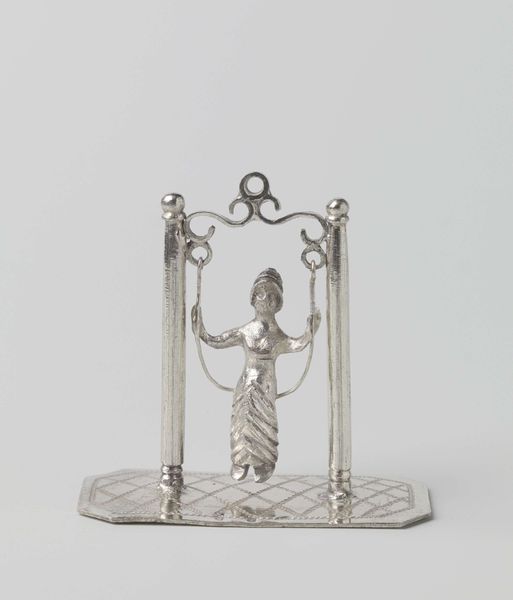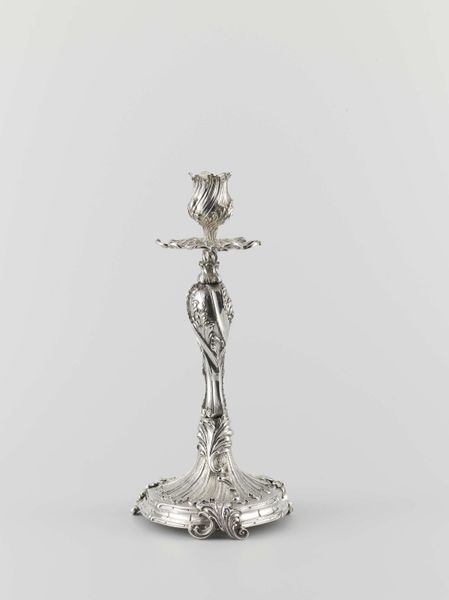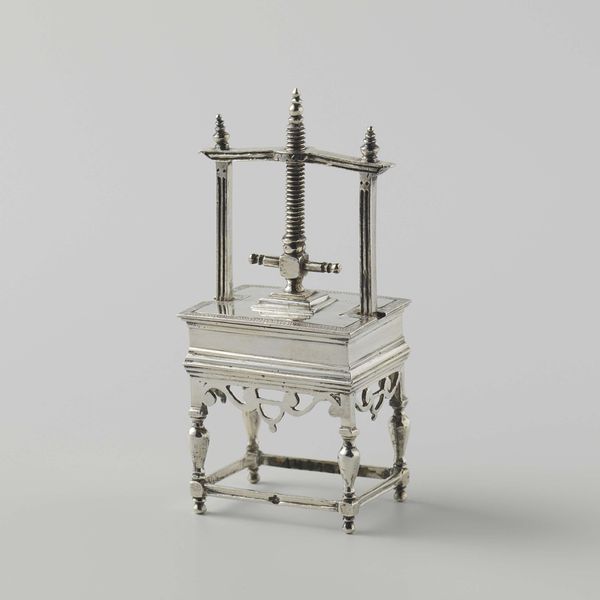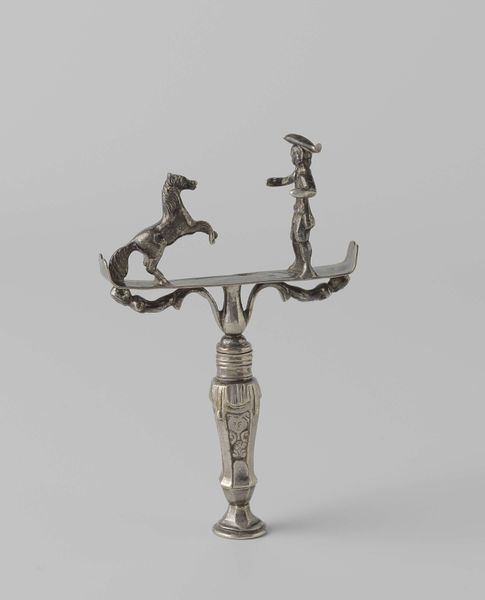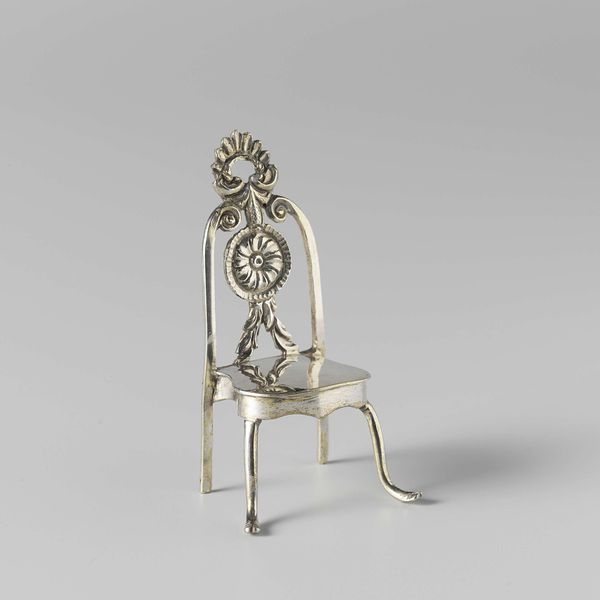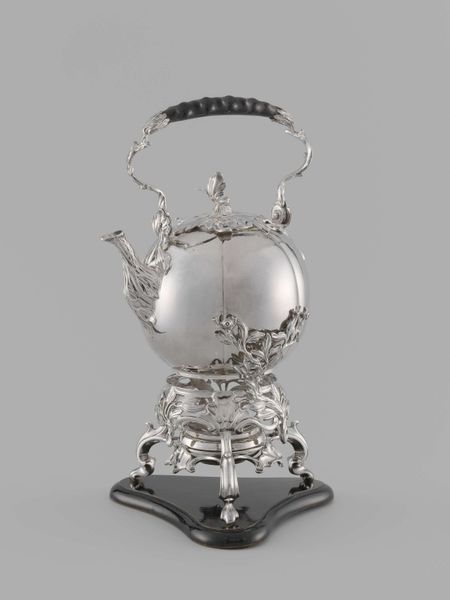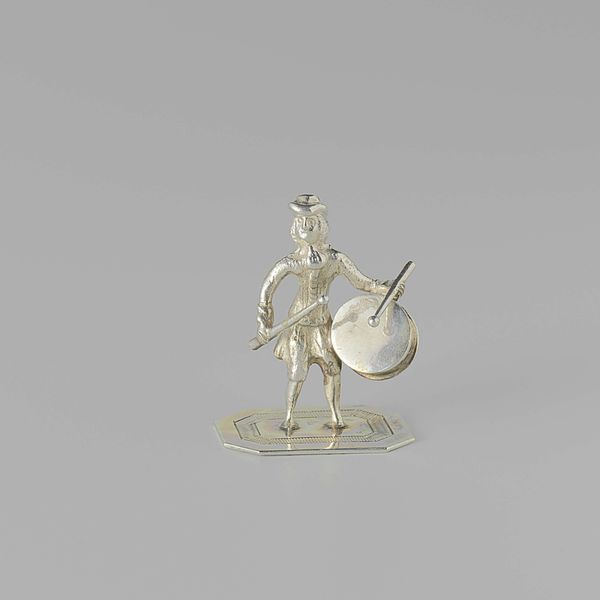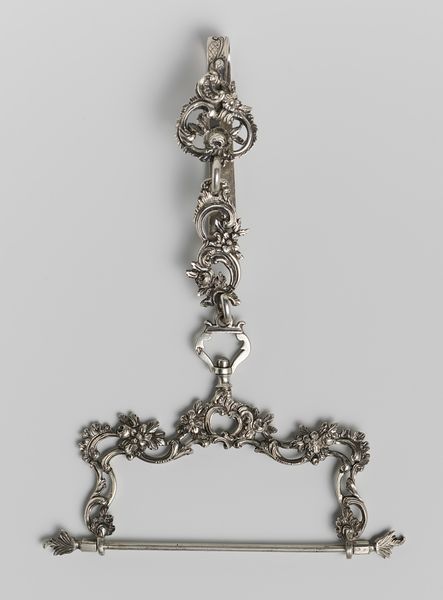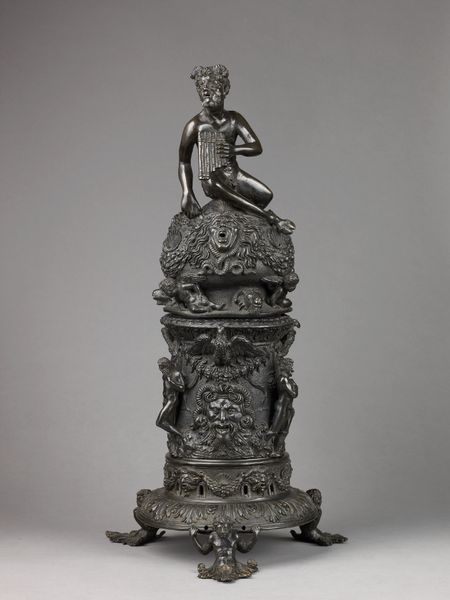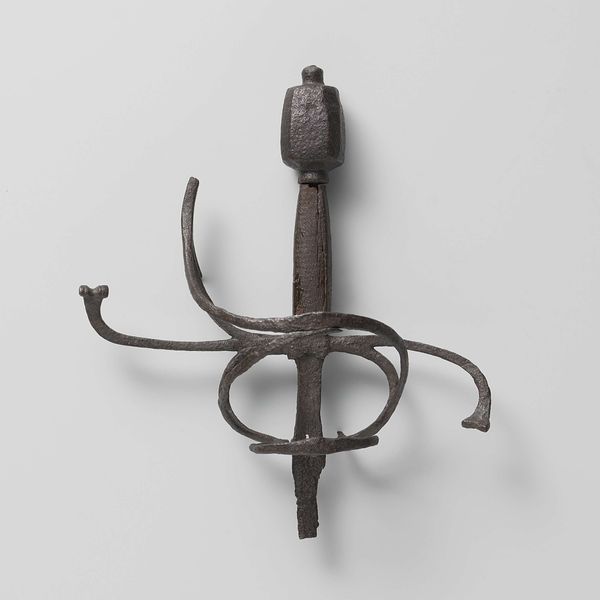
silver, metal, sculpture
#
portrait
#
neoclacissism
#
silver
#
metal
#
figuration
#
sculpture
#
miniature
Dimensions: length 4.9 cm, width 2.7 cm, height 5.7 cm, weight 8.99 gr, weight 18.20 gr
Copyright: Rijks Museum: Open Domain
Editor: Here we have Gijsbert Barbiers' "Kind op schommel," or "Child on Swing," made sometime between 1822 and 1827 from silver. It's surprisingly small, like something you'd find in a dollhouse! There's a wistful stillness to it, even though it depicts an action. What draws your eye when you look at this little sculpture? Curator: You know, it's funny, the stillness grabs me too, even more than the miniature aspect. It’s a moment frozen in time, like childhood itself – fleeting, but etched in memory. And rendered in silver, it becomes precious, doesn’t it? This silvery echo from the 1820s! Makes me wonder what Barbiers was trying to say about memory, about capturing joy in something so permanent, yet so easily lost if you're not careful. The Neoclassical influence is visible isn’t it? The simplicity of the form and almost austere feel. Does that make you think of anything? Editor: I can see that simplicity! I suppose it also makes it seem a bit... distant? Like childhood as a concept, rather than a specific, messy experience? Curator: Precisely! That tension is what I find so compelling. It's not just a child on a swing, is it? It’s an idealized version of it, viewed through a lens of decorum. Perhaps a commentary on how society "frames" innocence. We often forget it wasn't until later that the freedom of childhood started getting celebrated, and romanticized. Before then... kids were just little adults. Editor: That's a cool thought. It makes this piece feel much more layered than I initially thought! Curator: Exactly. Art often hides its deepest secrets in plain sight. Now you see why I find this "little sculpture" so precious?
Comments
No comments
Be the first to comment and join the conversation on the ultimate creative platform.
